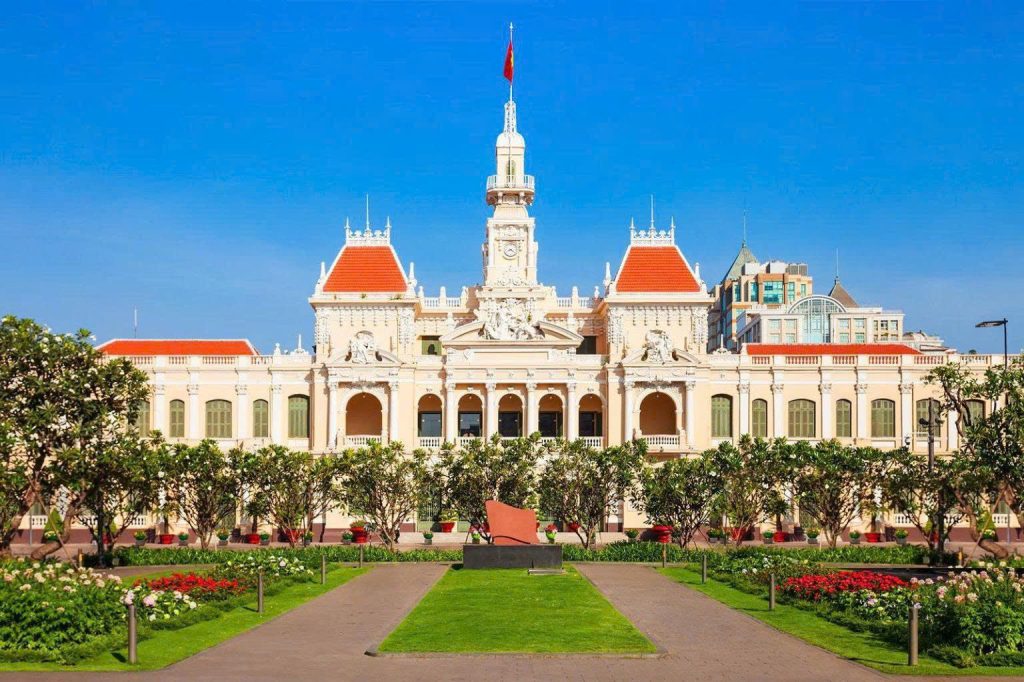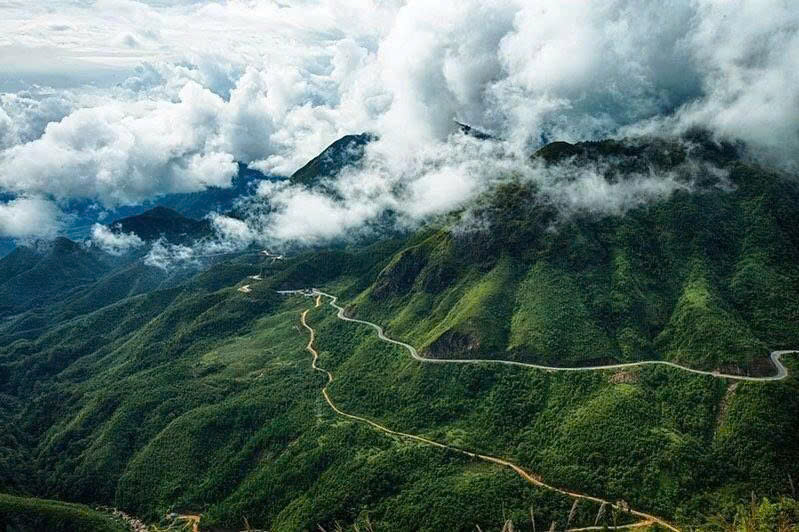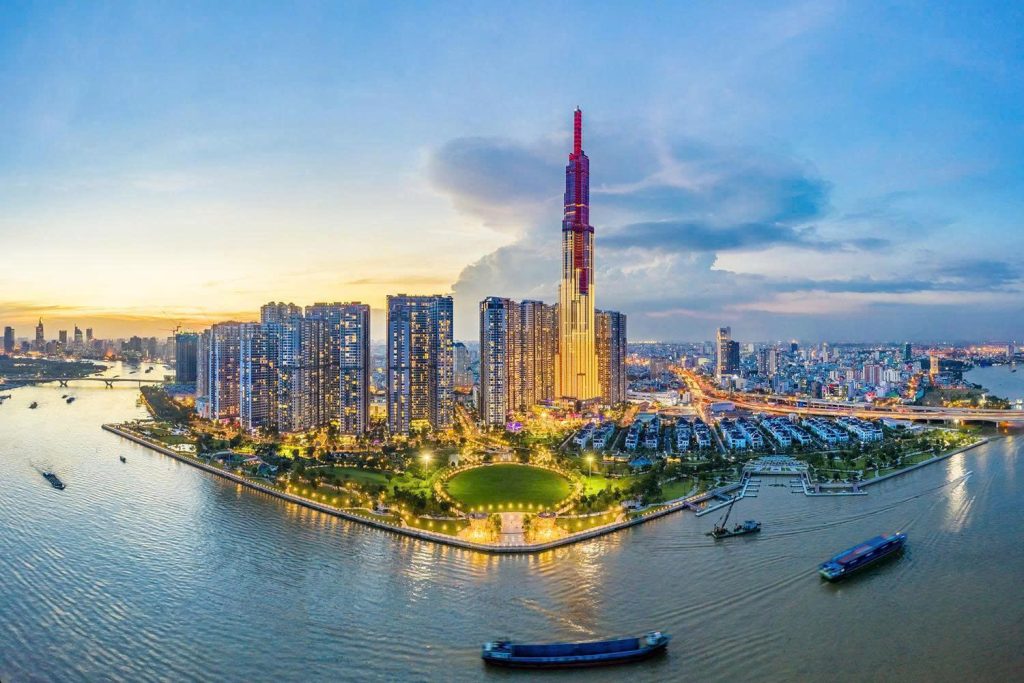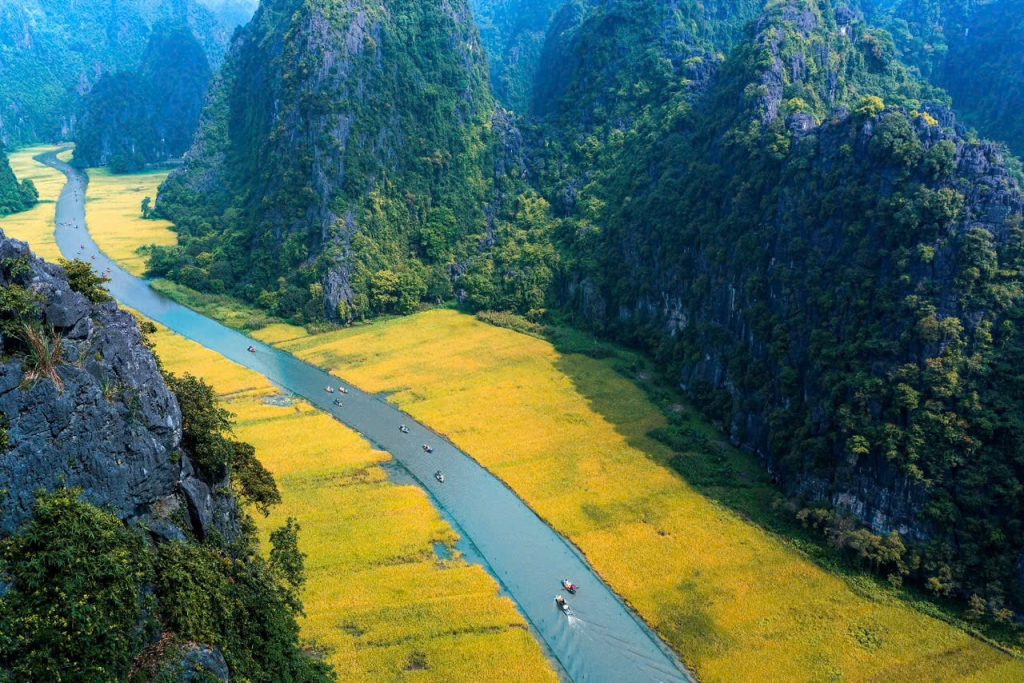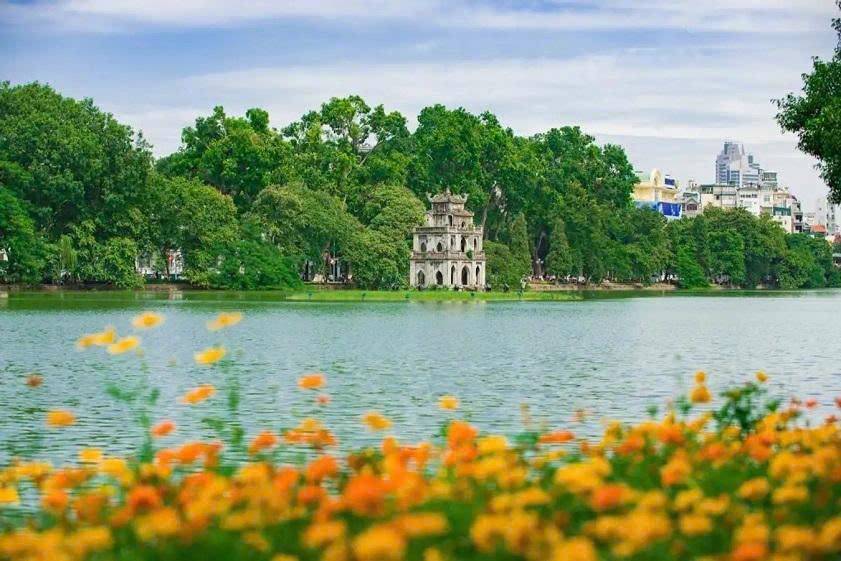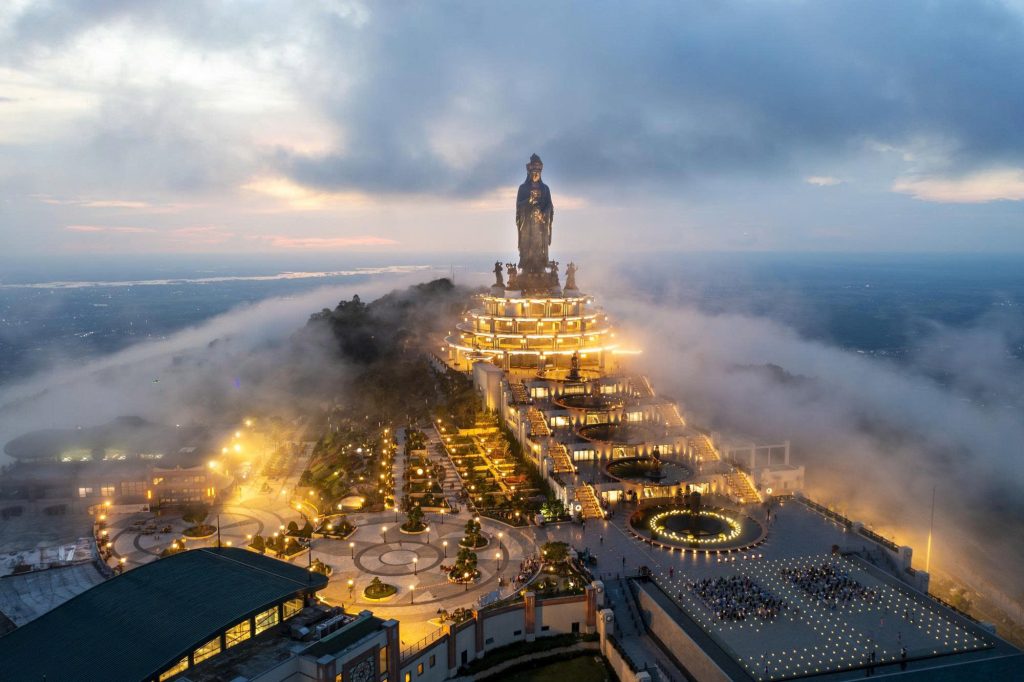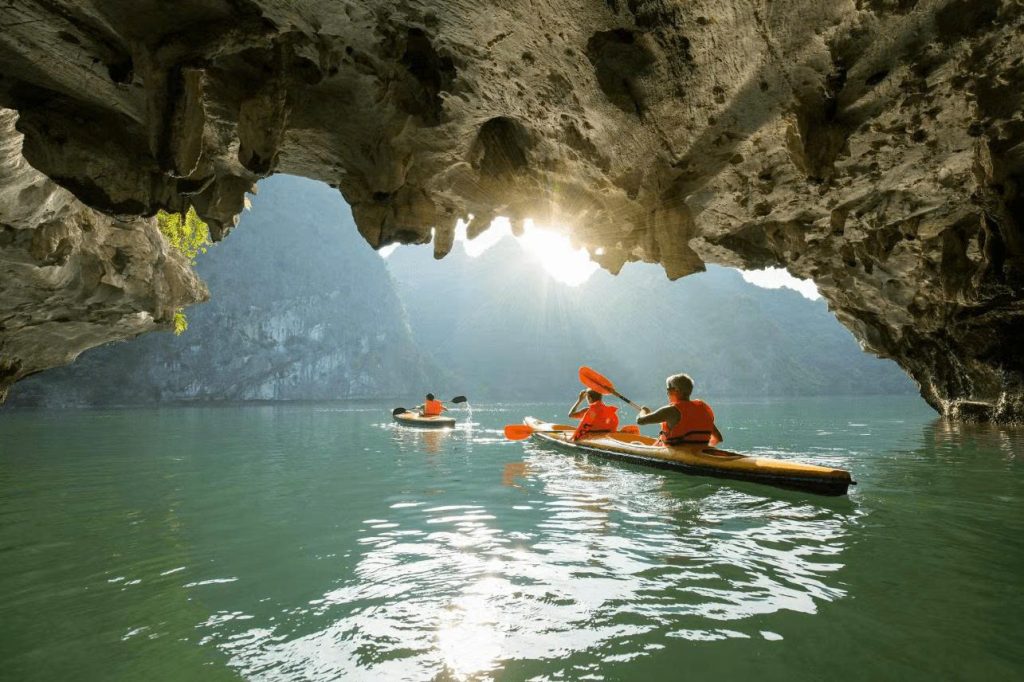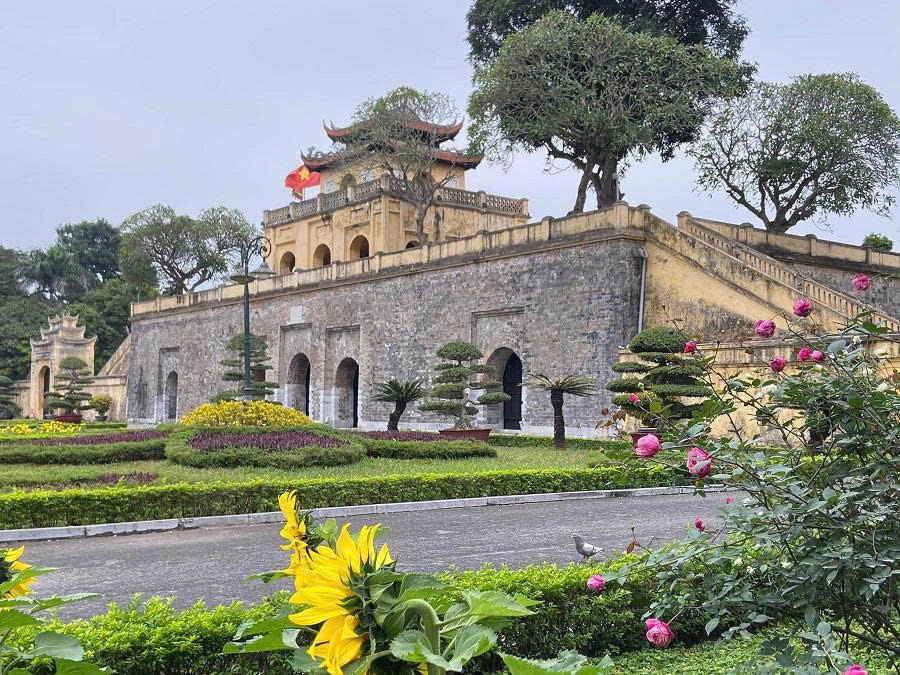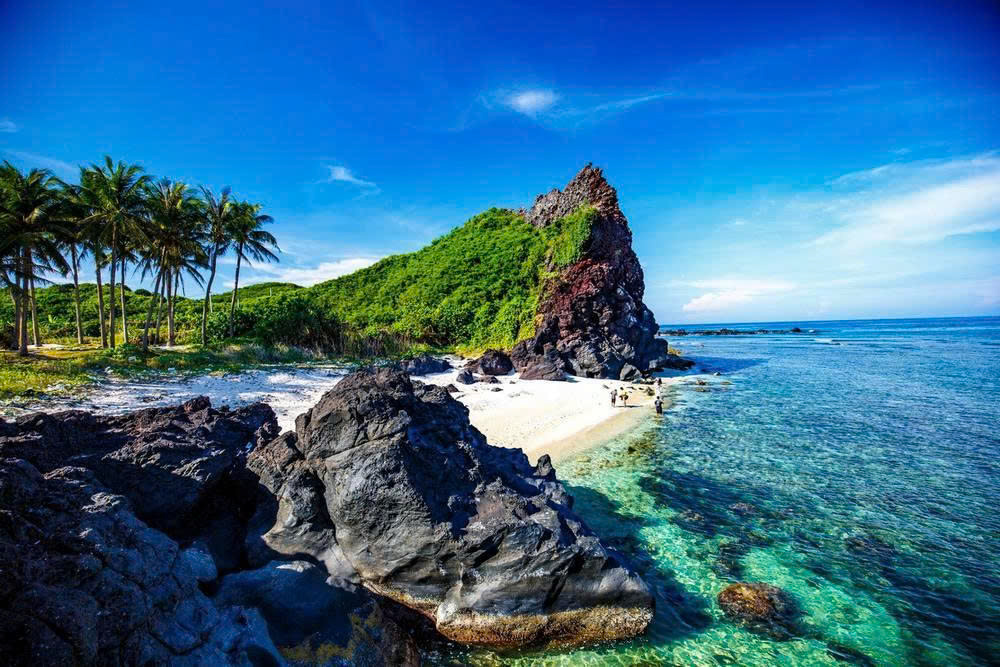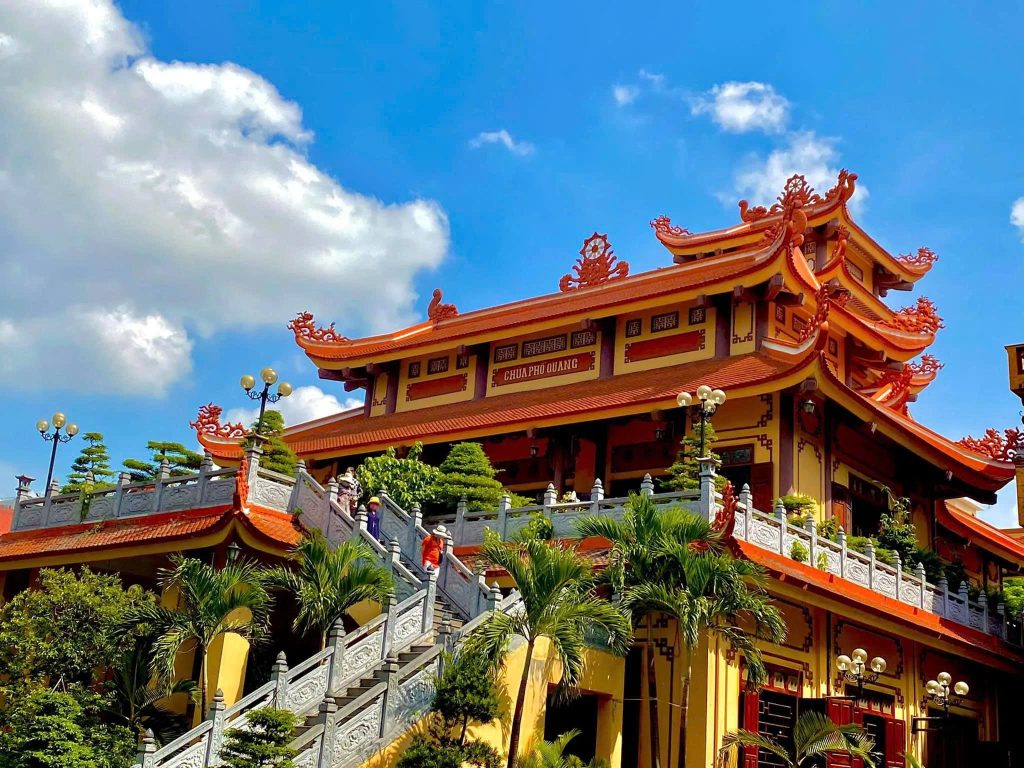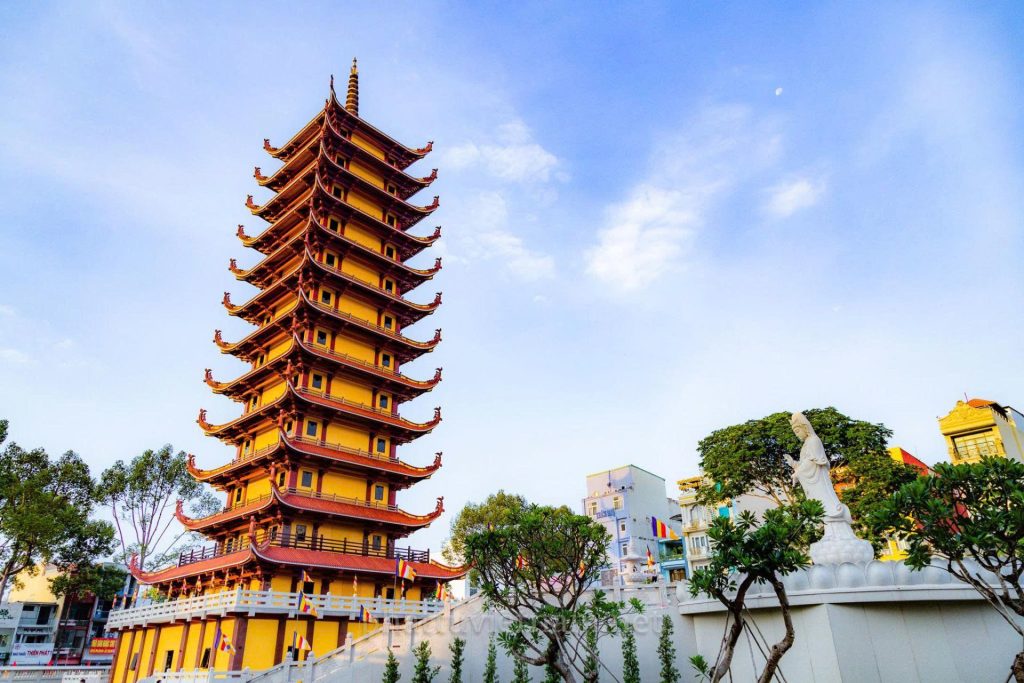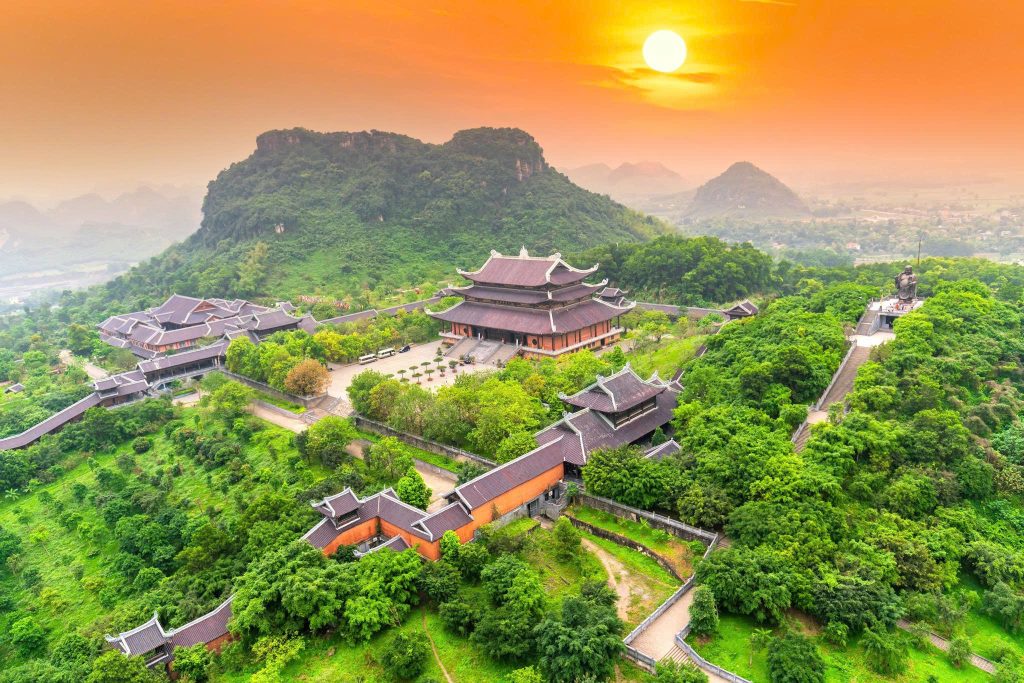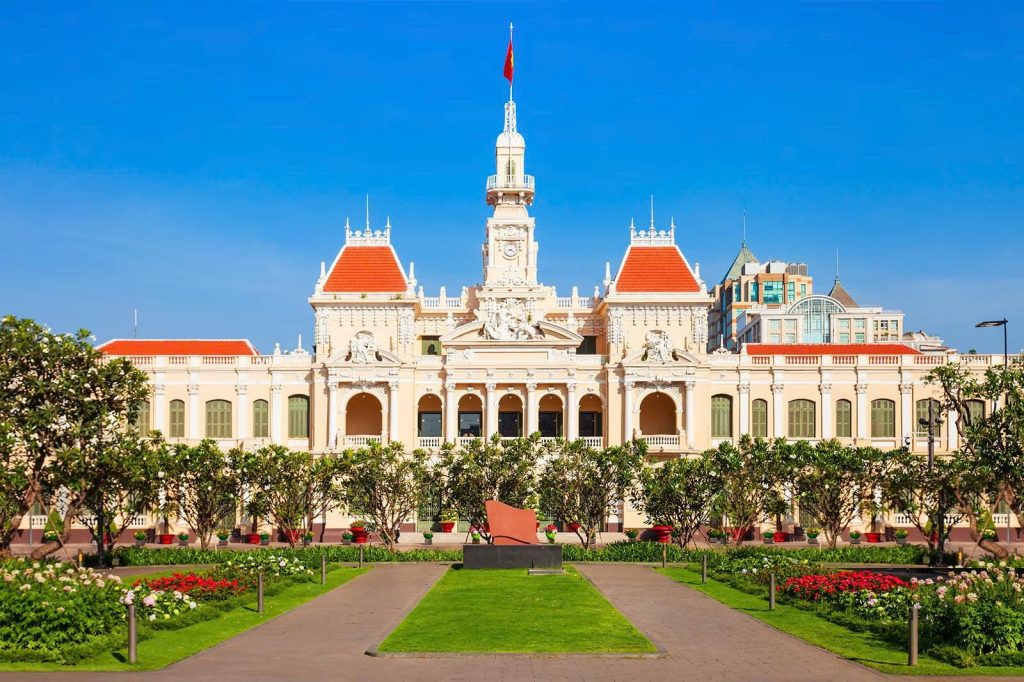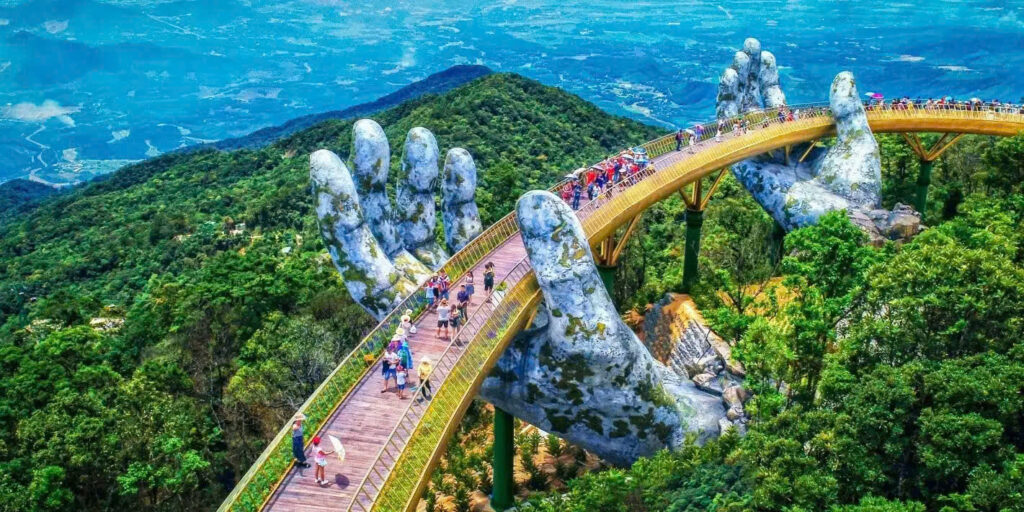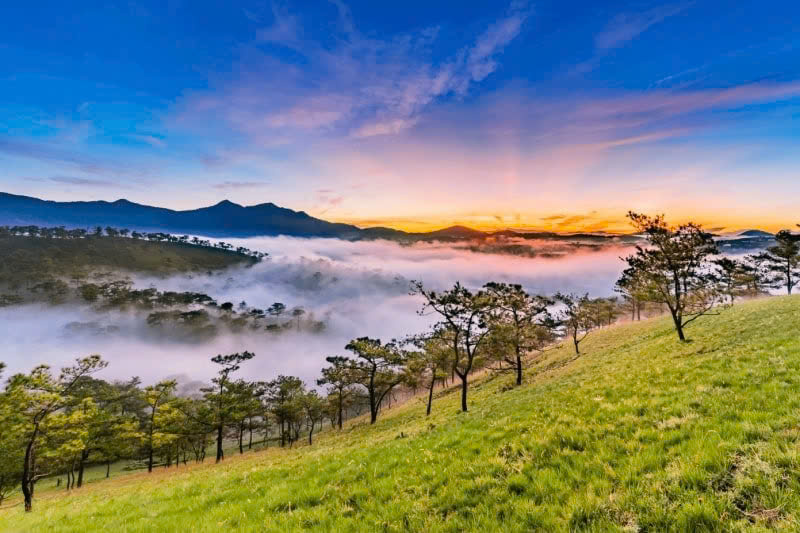The Truc Lam Yen Tu Zen Monastery enjoys a spectacular setting on the peak of the majestic Yen Tu Mountain, within the celebrated Yen Tu scenic complex. This sacred temple holds immense spiritual significance, chosen by King Tran Nhan Tong as his place of monastic practice. Upon his arrival and subsequent ordination, he initiated its transformation into a dignified, serene, and well-structured sanctuary. In this place, Tran Nhan Tong frequently guided the chanting of sacred texts and gave Buddhist teachings, accompanied by respected Zen Masters Phap Loa and Huyen Trang. Today, the Lan Pagoda within the complex stands as a resplendent and captivating temple, a testament to the generous contributions of Venerable Thich Thanh Tu and devoted Buddhist followers.
1. History of Yen Tu Zen Monastery

Yen Tu Mountain is home to this monastery. Monks studied here. King Tran Nhan Tong was key. He became king around 1278. He then fought Mongol invaders. The Tran monarchs and General Tran Quoc Tuan achieved victory. Thereafter, Tran Nhan Tong embraced the life of a monk, established the Truc Lam Zen lineage, and embarked on the construction of this monastery. Furthermore, Zen Masters Phap Loa and Huyen Quang held significant roles.
The temple was damaged in the war against France. Only 23 stupas were left. It was rebuilt in the times of the Le and Nguyen dynasties. It was renamed Truc Lam Zen Monastery. In 2002, a big ceremony marked its rebuilding. Later, they celebrated its opening on King Tran Nhan Tong’s birthday.
2. How to go to Truc Lam Yen Tu Zen Monastery
Traveling to Yen Tu offers visitors various transportation options, each providing a unique experience and the chance to traverse scenic routes and explore majestic natural landscapes. The most frequently selected ways for visitors to travel are listed below:
Traveling by Private Vehicle (Car, Motorcycle)
For visitors departing from Hanoi city center towards the Yen Tu tourist area in Quang Ninh, the journey spans approximately 140km. The recommended route from the center is as follows:
Follow the direction of Chuong Duong Bridge, proceed through Nguyen Ven Ce Street, and continue along National Highway 18 (QL18) towards Bac Ninh. From there, simply drive straight until you reach Trinh Temple, where you will turn left. After approximately 10km, you will arrive at Yen Tu. Opting for private transportation offers flexibility in terms of time and allows for leisurely stops at scenic spots along the way for memorable photos.
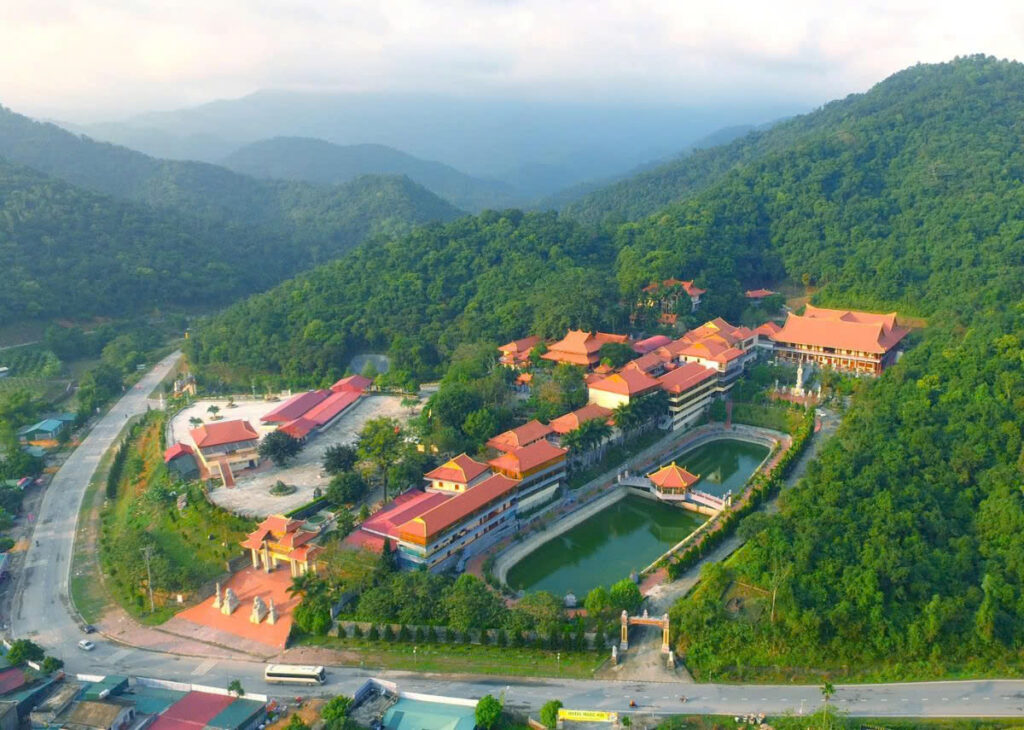
Traveling to Yen Tu by Passenger Bus
From Hanoi, you have the option of taking buses that head towards Cam Pha, Uong Bi, or Hạ Long. These buses will take you to Truc Lam Zen Monastery. When the bus reaches the Chua Trinh area on National Highway 18, get off. From there, take another bus to Yen Tu. This offers a convenient way to reach the spiritual site.
3. Exploring Truc Lam Yen Tu Zen Monastery
Zone I of Truc Lam Yen Tu Zen Monastery covers 125,198m². It has an Inner and Outer Precinct. You will see structures like the Main Hall, Meditation Hall, Bell Tower, Drum Tower, and Buddha Stupa. Furthermore, Zone II is vast, covering 237,077m². Its entire forest remains untouched. The architecture and the natural beauty of Yen Tu blend in serene harmony.
The Temple Courtyard
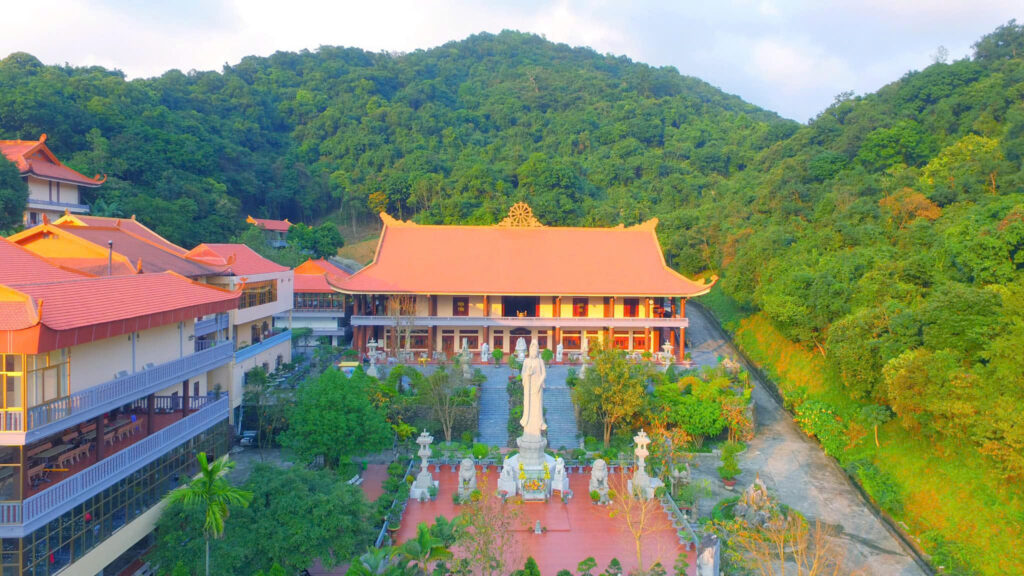
The courtyard has large industrial stone slabs. This creates a spacious and solemn feel. The Bell Tower occupies one side of the courtyard, with the Drum Tower located on the other. They are built on a nine-step platform. These towers have a four-sided design, two tiled roofs, and stone railings around them. In front of the Main Hall, a notable red granite from Binh Dinh stands out. It has a 1.59m diameter and weighs 6.5 tons. This structure is within an octagonal area. Eight flower beds surround it, symbolizing the Eightfold Path in Buddhism.
The Main Hall
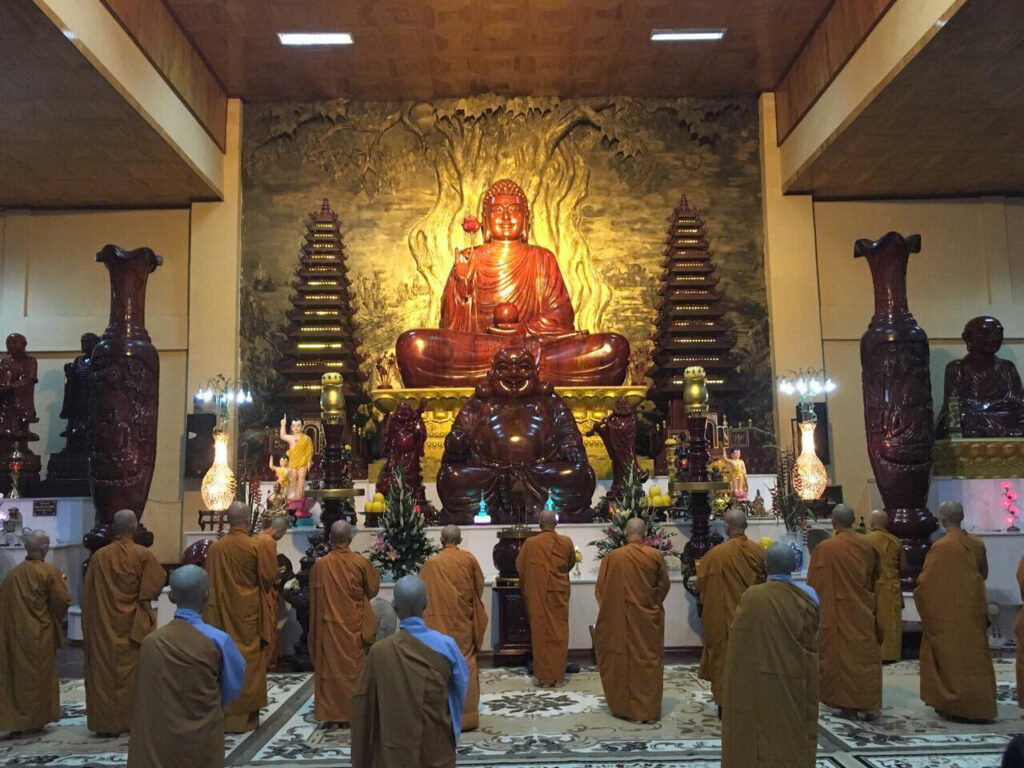
The Main Hall of the Zen Monastery has an imposing and large architectural style. It has a square shape, two stories, and eight curved tiled roofs. Falun symbols, which are the emblems of Buddhism, are sculpted along the roof ridge. The roof finials have delicate curves. The entire internal structure uses reinforced concrete. This ensures stability while keeping an ancient look.
The central sanctuary of the Main Hall features a prominent bronze statue of Buddha Shakyamuni in the Lotus Pose. This nearly four-ton sculpture holds the distinction of being the largest worshipped figure in Yen Tu. On either side of it stand statues of Bodhisattva Manjusri and Bodhisattva Samantabhadra. Situated behind the main altar is a bronze relief that illustrates the Bodhi tree and the Himalayan range. In the front, an intricately carved wooden canopy creates a sacred and solemn space.
The Ancestral House
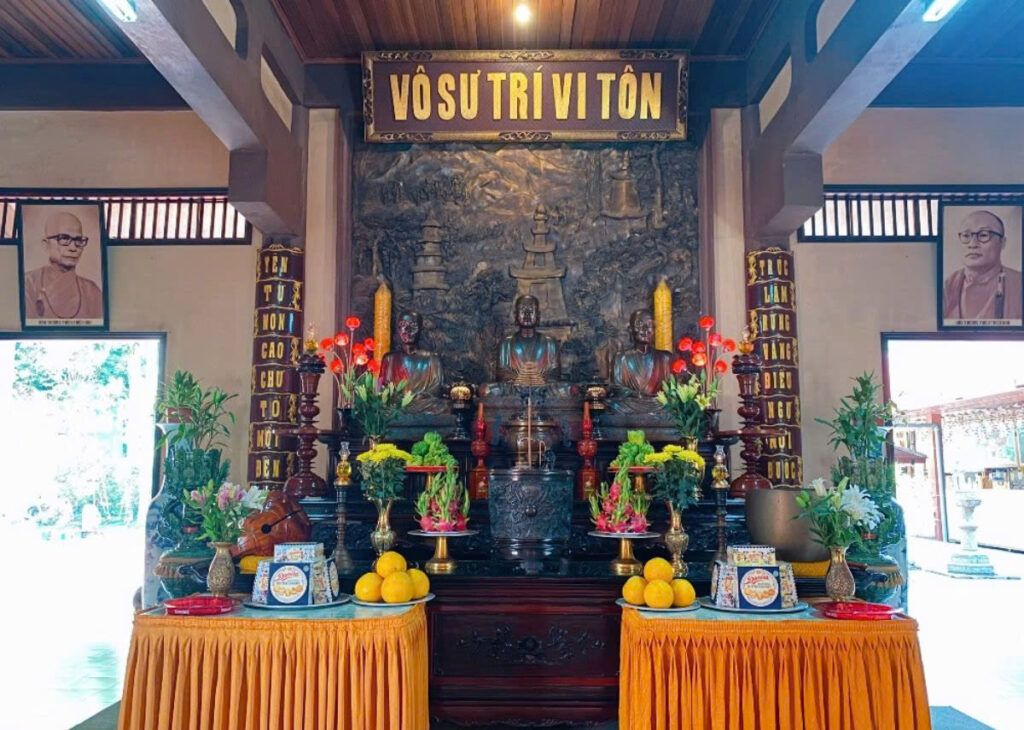
The Ancestral House is behind the Main Hall. It has a square architectural design with two overlapping hipped roofs, similar to the Main Hall. The three Truc Lam Patriarchs, namely Tran Nhan Tong, Phap Loa, and Huyen Quang, are the focus of reverence inside the Ancestral Hall. Their bronze statues sit on lotus pedestals in the meditation posture. Behind them, a large relief shows the Yen Tu mountains and forests and the Tue Quang Stupa garden. Above it hangs a horizontal lacquered board with the inscription “Vo su tri vi ton” (Wisdom without a teacher is supreme). Distinctive parallel sentences stand on either side, creating a solemn and sacred ambiance.
Other Auxiliary Structures
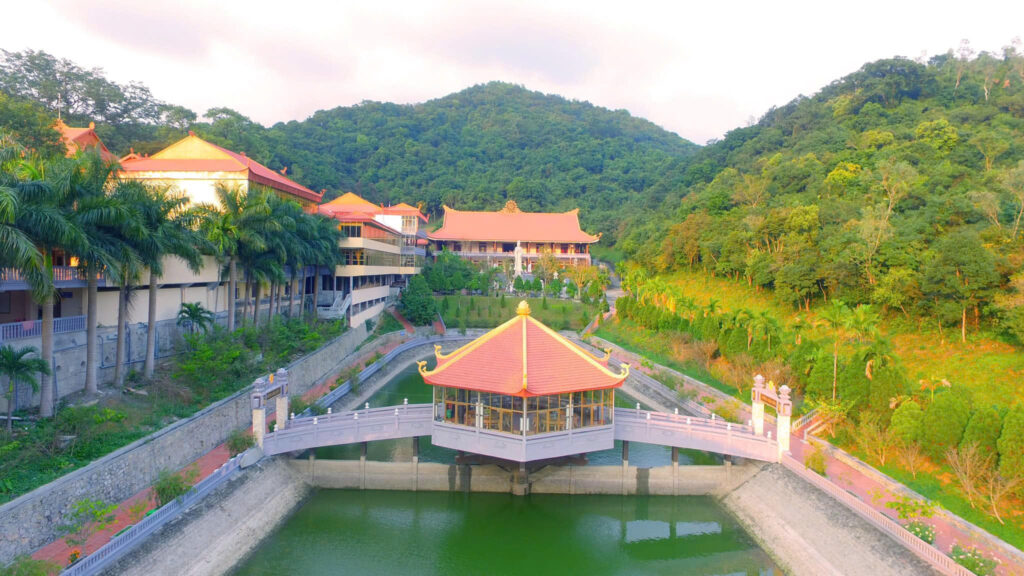
Besides the Main Hall and the Ancestral House, Truc Lam Yen Tu Zen Monastery has other structures for visitors to see. Behind and to the right of the Ancestral House is the Tịch Quang Stone Stupa and an old banyan tree, offering a place to rest. To the right of the Main Hall is an exhibition house. It displays excavated artifacts from the temple. The structures behind and to the left of the Main Hall serve the meditation practices and daily life of the Sangha (monks and nuns) and Buddhist followers.
4. Festivals at Truc Lam Yen Tu Zen Monastery, Quang Ninh
The Yen Tu tourism experience is significantly shaped by the festivals held at the Truc Lam Yen Tu Zen Monastery in Quang Ninh. Thousands of visitors come each year. These Yen Tu festivals have deep spiritual meaning. They also allow visitors to learn about the unique customs and traditions of this sacred land.
- Third Patriarch Huyen Quang: Lunar Jan 23
- Second Patriarch Phap Loa: Lunar Mar 3
- Buddha’s Birthday, Summer Retreat begins: Lunar Apr 15
- Vu Lan (Ancestor Day) & Retreat End: Lunar Jul 15
- Commemoration of Zen Master Chan Nguyen: October 28th of the lunar calendar
- Commemoration of the First Truc Lam Patriarch, King Tran Nhan Tong: November 1st of the lunar calendar
- Lunar December 8: Buddha’s Enlightenment
5. Tips for Visiting Truc Lam Yen Tu Zen Monastery
When you visit here, you will admire the beauty of Buddhist architecture. You will also find a peaceful space in the mountains and forests. Here are some important notes:
- Leave your footwear outside the Main Hall. This helps keep the sacred space clean.
- Avoid wearing very short or sleeveless clothing. This shows respect for the solemn rules here.
- Do not make noise, eat, drink, or engage in recreational activities within the monastery grounds.
- Do not touch altars or Buddha statues. This maintains reverence.
- Besides Lan Pagoda, you can also visit other famous Yen Tu scenic spots. These include Mot Mai Pagoda, Ngoa Van Pagoda, Dong Pagoda, and Hue Quang Stupa. This will enrich your pilgrimage.
RELATED: Best Vietnam Meditation Retreats for True Mindfulness
Truc Lam Yen Tu Zen Monastery offers a profound travel experience, blending historical significance with breathtaking natural beauty. From its tranquil meditation halls to the stunning mountain views, it’s a must-visit for anyone seeking peace and cultural insight. Plan your trip and discover this spiritual gem for yourself.


